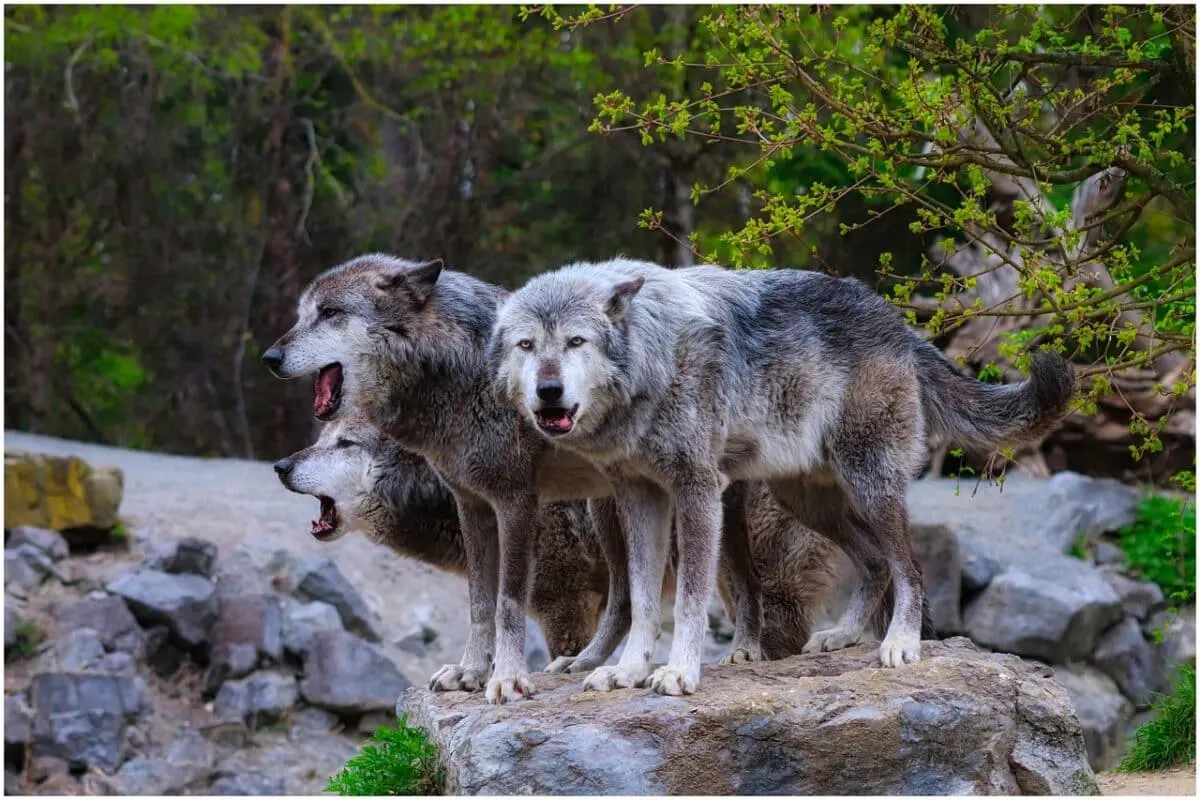When pictured together in our minds, the images of a moose and a pack of wolves often signify a face-off full of drama and potentially deadly. But how does this scene usually unfold? What are the roles played by each side?
In this guideline, we’ll work to answer these questions as we explore how one solitary moose can stand a chance against an entire pack of wolves in what has become known as “forest face-offs.”
From describing the typical actions of each animal involved in such encounters to understanding why they happen, let’s dig deeper into the world of Moose Stands Against a Pack of Wolves!
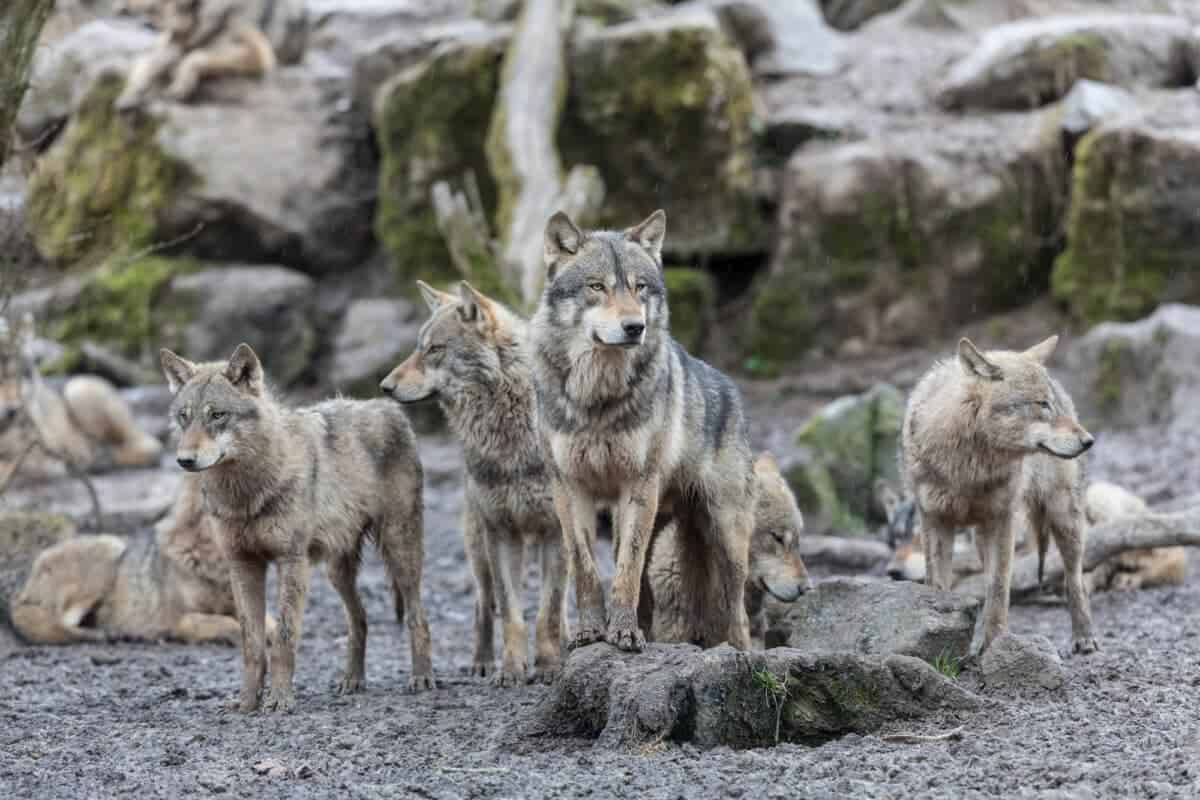
Skip ahead to any section below!
Comparison Table
| Aspect | Moose | Pack of Wolves |
| Size | Large and imposing | Agile and coordinated |
| Strategy | Stand sideways, posture | Collaborative hunting |
| Dominance Display | Making itself appear larger | Unified pack behavior |
| Individual Strength | Lone moose defying the pack | Pack strength in numbers |
| Potential Outcome | Survival or escape | Successful hunt or retreat |
| Nature’s Balance | Maintaining ecosystem | Controlling prey population |
| Role in Ecosystem | Herbivorous grazer | Apex predators |
The Moose
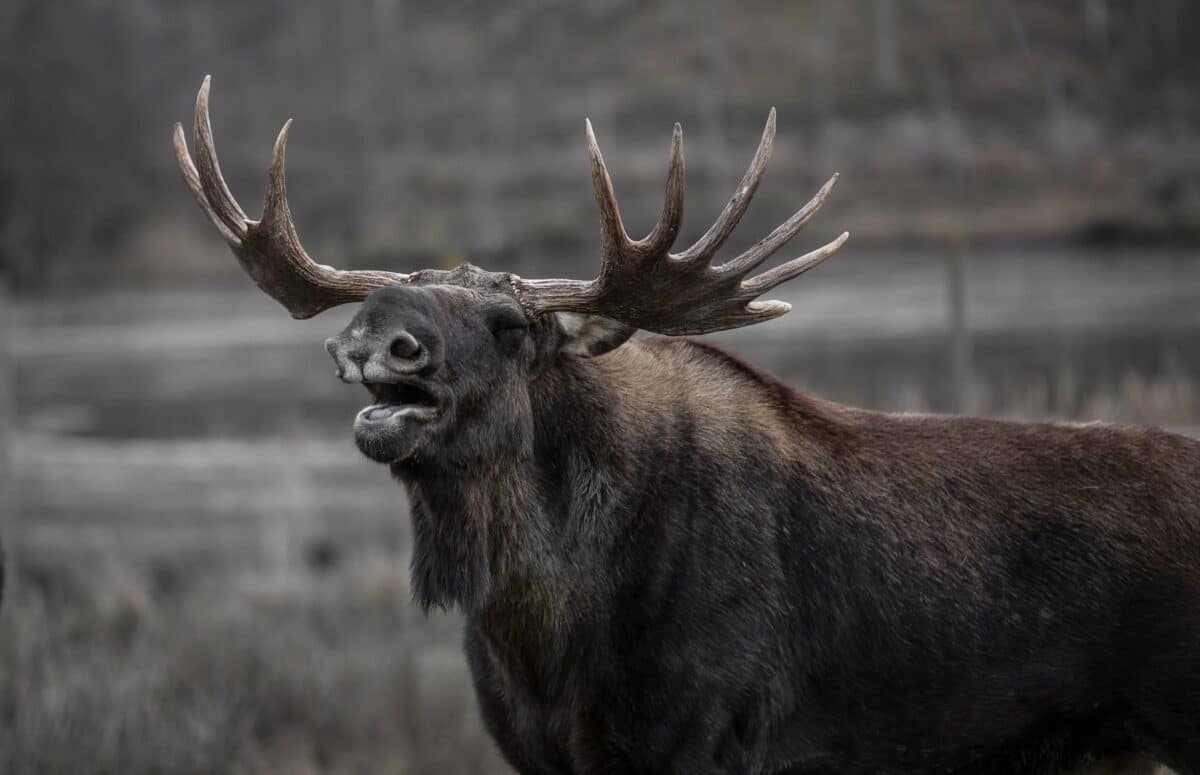
Moose. Image via Depositphotos.
The moose, a majestic creature of the forest, possesses distinct physical characteristics and an imposing size. Standing as tall as six feet at the shoulder and weighing up to 1,500 pounds, it commands attention.
During confrontations, a moose may adopt defensive behaviors, such as standing sideways to appear larger and more formidable. Their powerful kicks and antlers serve as potent weapons against adversaries.
Beyond their individual traits, moose play a vital role in the ecosystem as herbivorous grazers, shaping vegetation patterns and contributing to the overall balance of the forest.
Check out: The Roadrunner Outruns A Rattlesnake.
The Pack Of Wolves
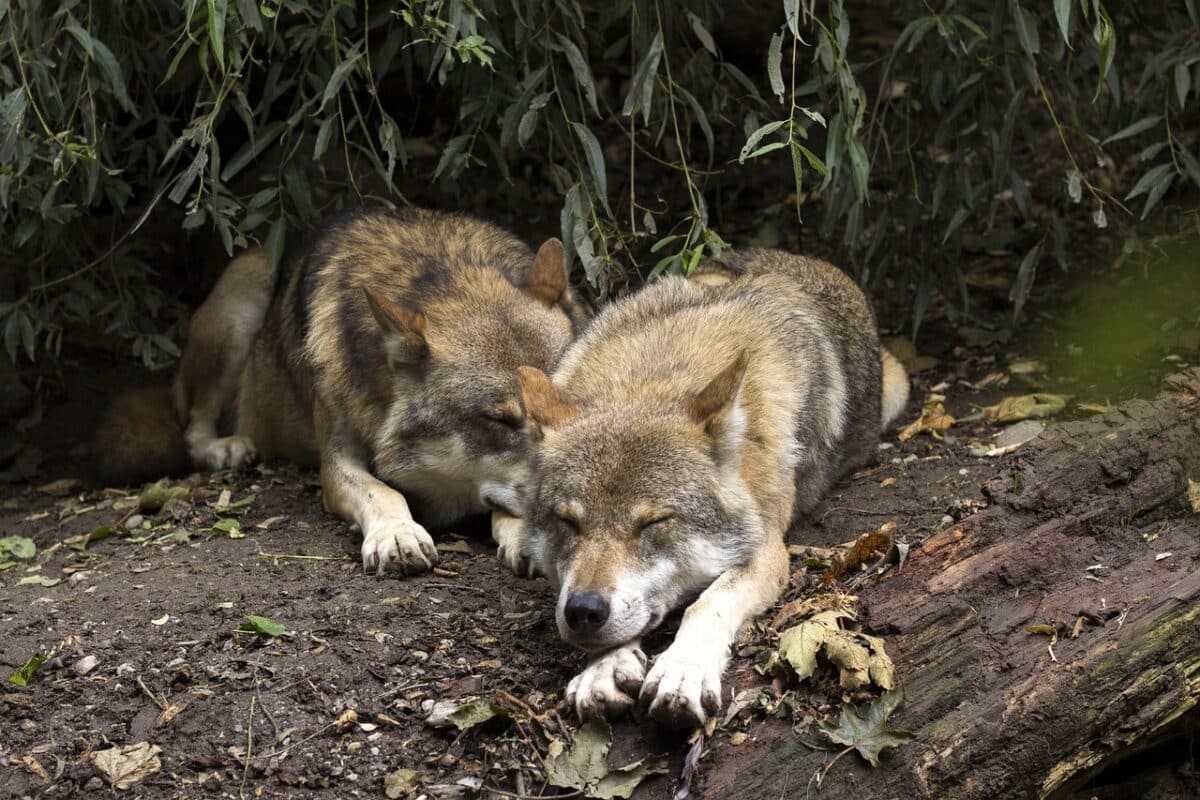
Wolf. Image via Depositphotos.
Wolves are known for their intricate pack dynamics and hierarchical structure. Wolf packs usually consist of an alpha pair, their offspring, and other subordinate members. These highly social animals rely on collaborative hunting strategies to secure their meals.
Coordinated efforts, communication through vocalizations and body language, and synchronized attacks allow the pack to bring down large prey. The presence of wolves in the forest ecosystem has profound implications, influencing prey population control, promoting biodiversity, and serving as a keystone species, shaping the delicate web of life in the wilderness.
Check out: Meet New York’s Urban Coyote Population.
What A Moose Encounter Looks Like
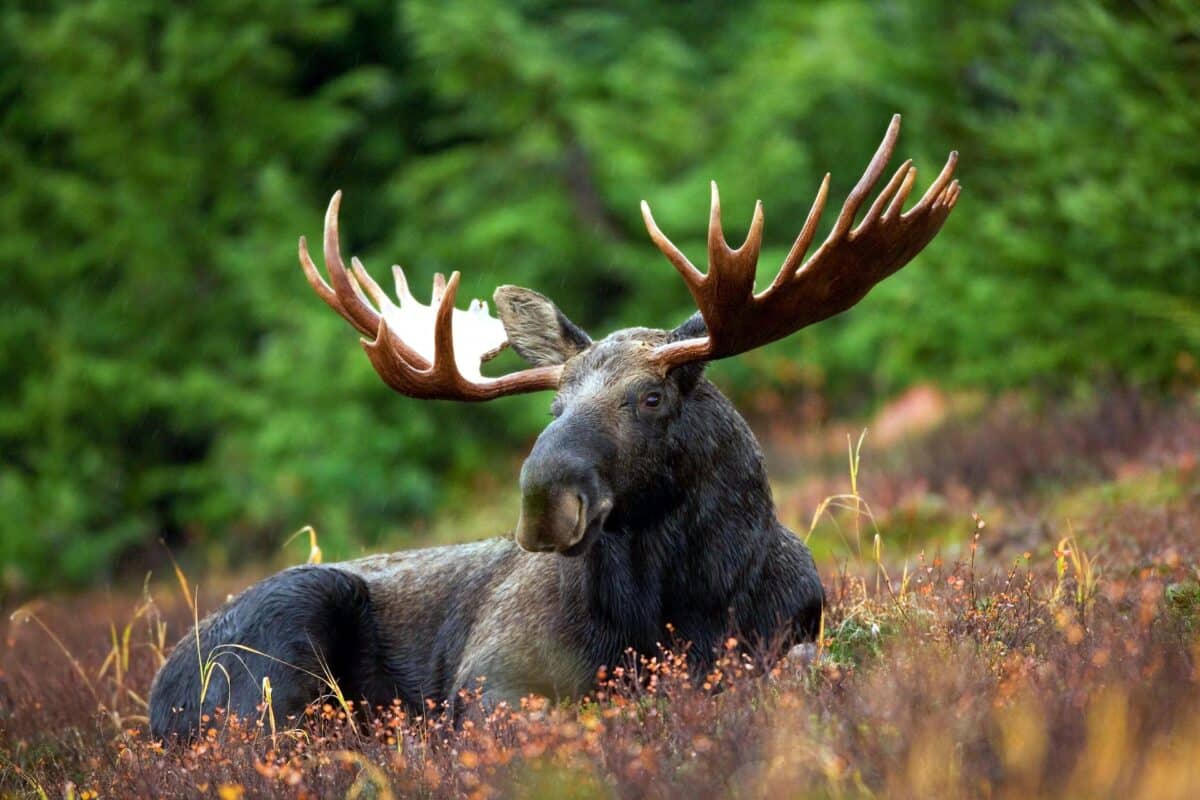
Moose. Image via Depositphotos.
Encountering a pack of wolves as a moose can be an unnerving experience, but it’s important to understand the behavior of these majestic creatures. When faced with a group of wolves, a moose often displays aggressive behavior by stomping its hooves, throwing its head back and forth, and lowering its head to charge.
Despite this display of dominance, moose are known to be cautious and may try to remove themselves from the situation by running away or entering nearby water sources.
Observing a moose encounter with a pack of wolves is truly a sight to behold. These animals are highly adaptable, and their reaction may vary depending on the number of wolves and the surrounding terrain.
While it’s important to give these animals plenty of space to avoid causing unnecessary stress, catching a glimpse of a moose standing its ground against a pack of wolves is a reminder of the beauty and resilience of the natural world.
Check out: Kangaroo Rat Dodges A Rattlesnake.
Physical Strength Of The Moose
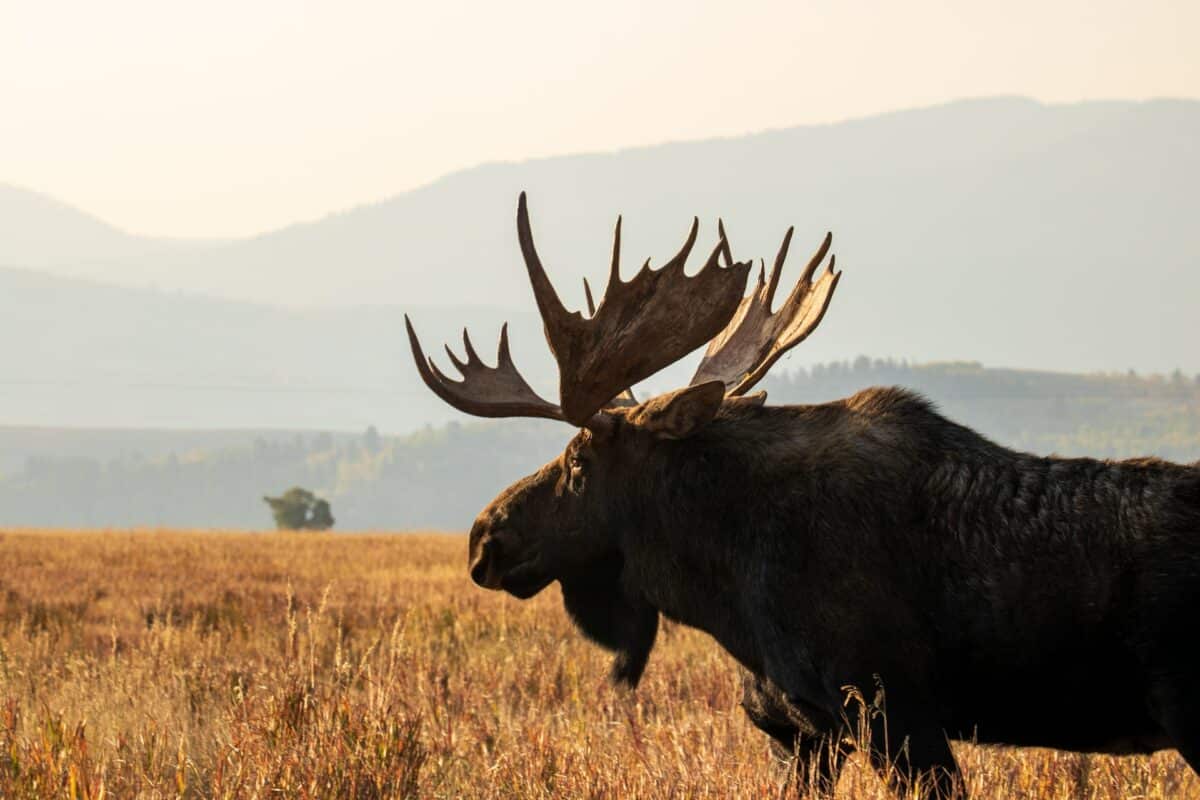
Moose Image. Image via Depositphotos.
Moose are remarkable creatures when it comes to physical strength. The Moose’s long and slender legs can run up to 35 miles per hour, making it difficult for predators to catch them.
Their muscles are also extremely powerful, allowing them to easily push aside snow and search for food during the winter. Their antlers, which can weigh up to 80 pounds, are an impressive weapon that they use to defend themselves against predators such as wolves and bears.
They use their physical strength to survive in the wild. Despite their size, these animals can protect themselves and their families from any threat that comes their way.
Check out: Domestic Cat Takes On A Wild Fox.
Social Adaptability
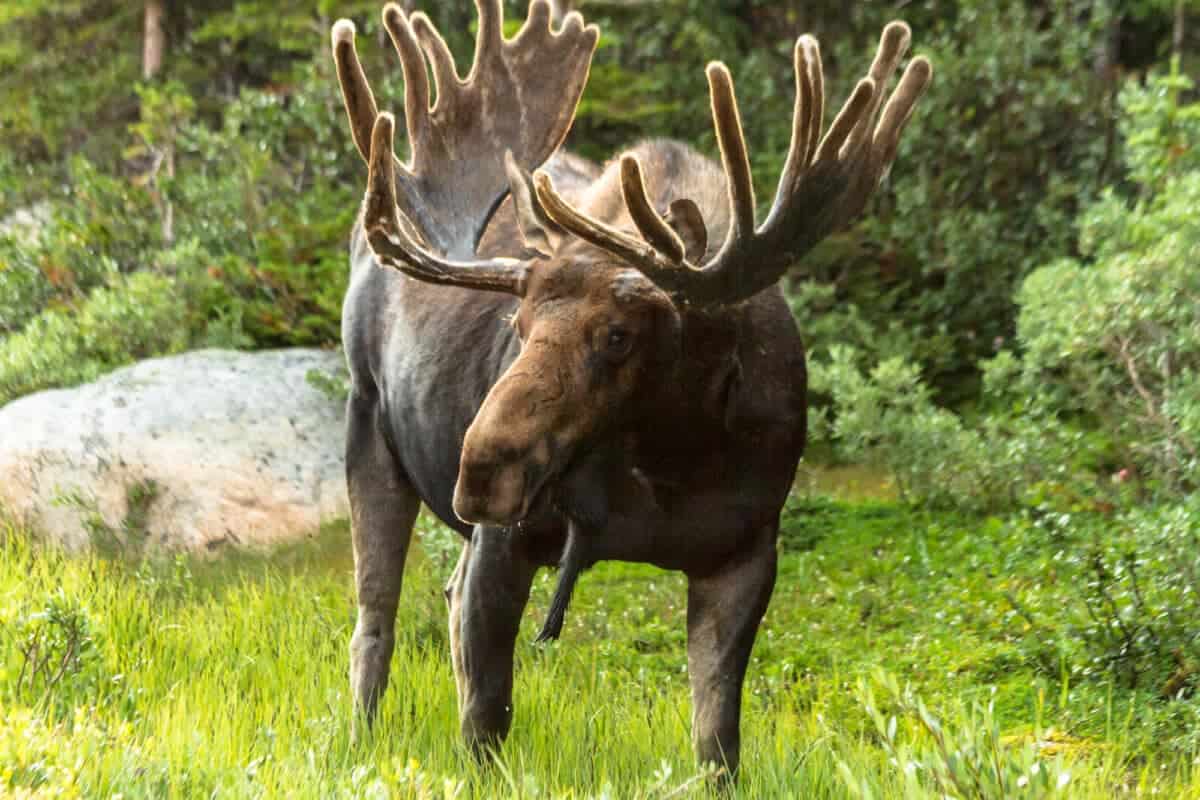
Moose are known to be highly adaptable creatures when it comes to their social behavior. Their ability to adjust and thrive in different environments largely depends on their communication skills.
In forest environments, where visibility is limited, moose use vocalizations as their primary mode of communication. However, in more open areas, they rely more on body language and other visual cues to communicate.
Despite these differences in communication methods, moose can maintain strong social bonds within their groups, whether large or small. This adaptability has allowed them to survive and thrive in various habitats, from the dense forests of Canada to the wide open spaces of the American West.
Self-Defense Tactics Used By Moose When Facing Down A Pack Of Wolves
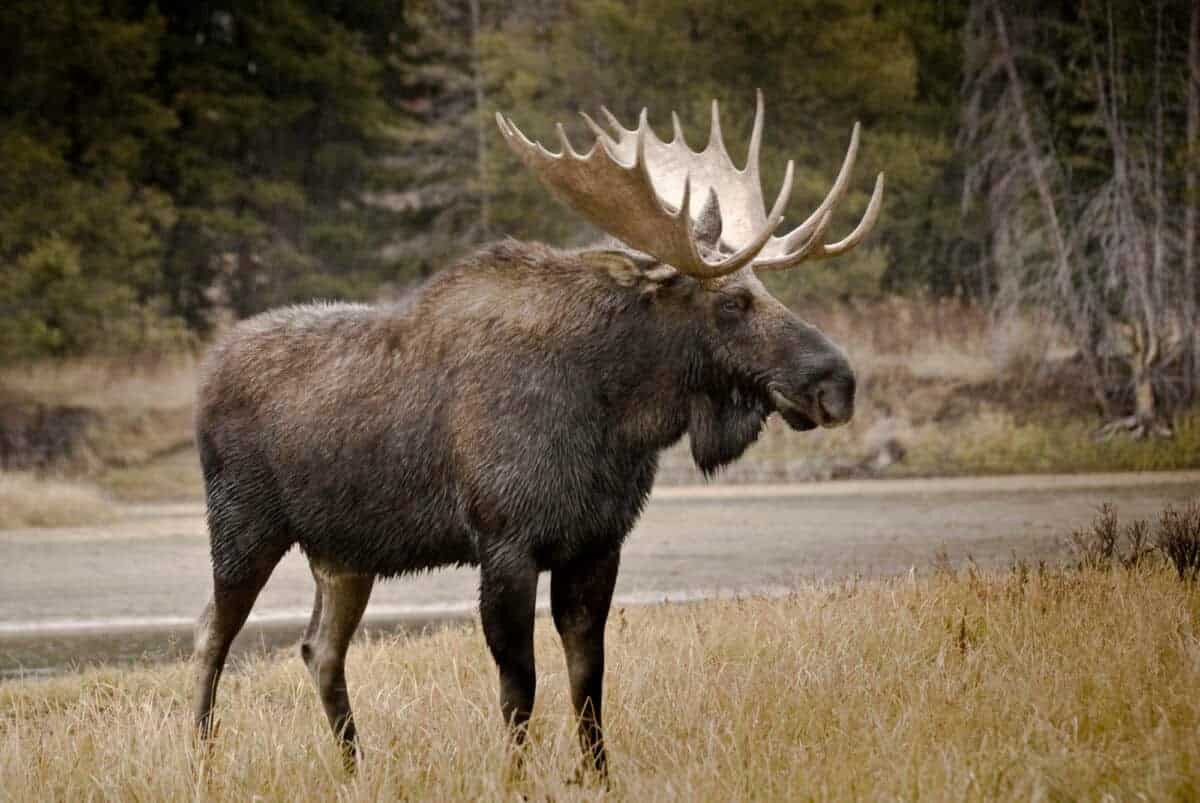
Moose. Image via Depositphotos.
When moose face a pack of wolves in a forest face-off, they must rely on their self-defense tactics to protect themselves from predators. These tactics include bluffing and intimidation to deter the wolves from attacking.
Bluffing
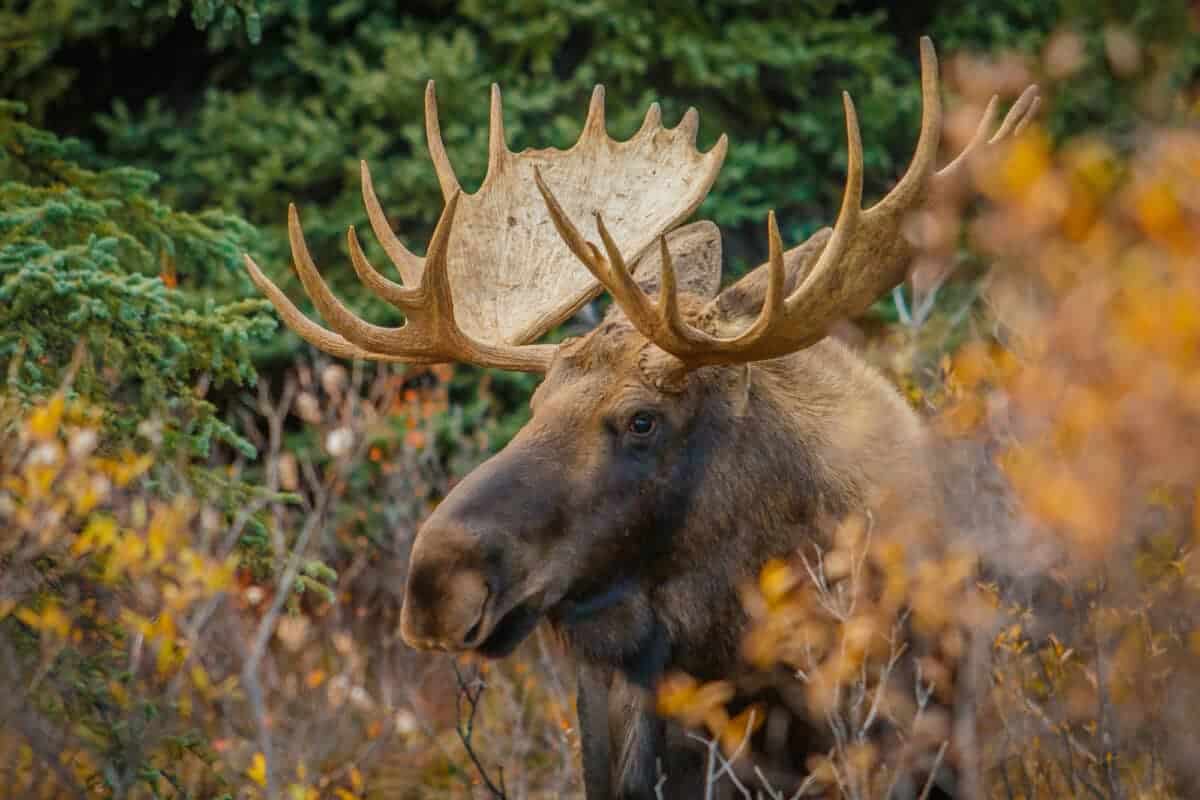
Moose. Image via Depositphotos.
Bluffing is one of the most commonly used self-defense tactics by moose. They often raise their hackles, or the long hair along their back, to appear larger and more intimidating.
Moose will stomp their feet, creating a loud noise that can startle the wolves and dissuade them from attacking. Additionally, moose may snort, grunt, or make other vocalizations further to assert their dominance over the pack of wolves.
Intimidation
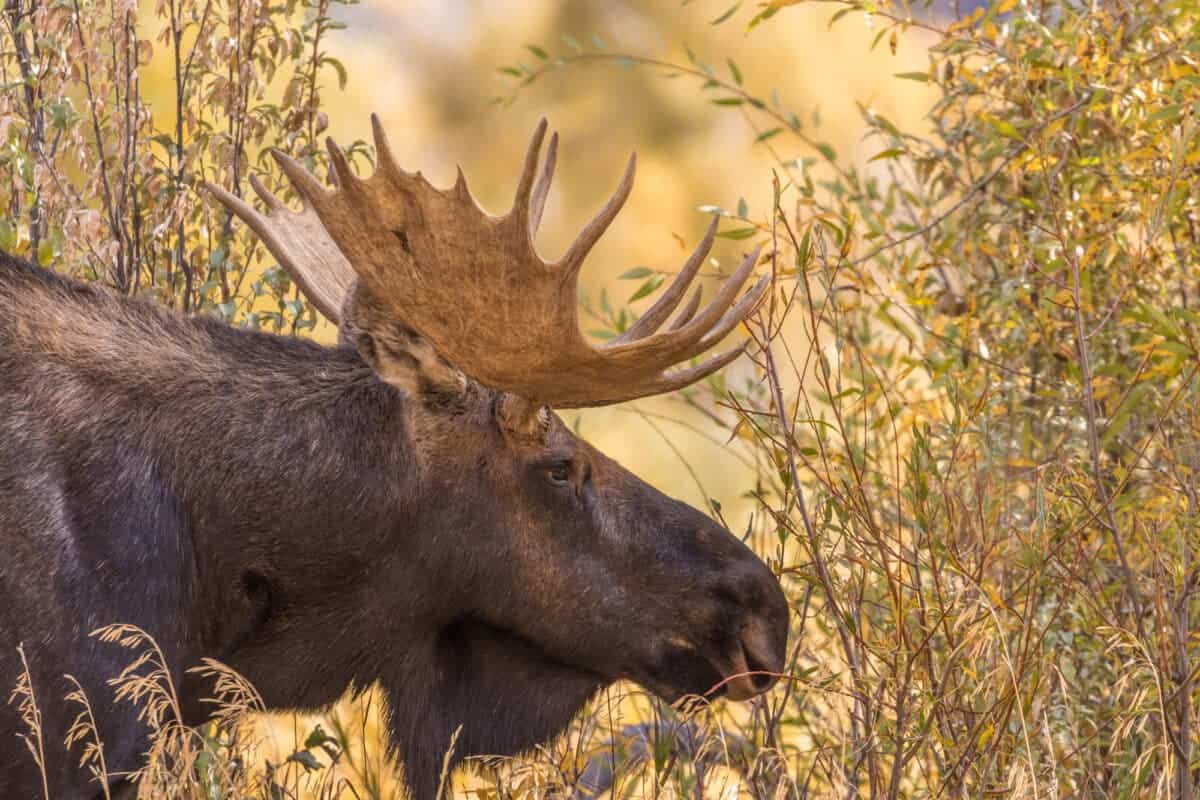
Moose. Image via Depositphotos.
Intimidation is another strategy used by moose to defend themselves against wolves. In a display of dominance, they often adopt a sideways stance, amplifying their size and intimidating presence. Moose will also move their head side-to-side motion, displaying their large antlers, which can be used to fight off the wolves if necessary. Coupled with their size, the display of antlers can often scare the wolves into backing off.
Furthermore, if the pack of wolves continues to advance and become too close for comfort, the moose may use their hooves as a last resort. A powerful kick from a moose can seriously harm a wolf, potentially even killing it. Moose are known for their strength and agility, so if the wolves do not crack under the bluffing and intimidation, they will receive a powerful blow that can temporarily disable them, allowing the moose to flee to safety.
When facing a pack of wolves, a moose’s self-defense tactics can be their lifeline. By employing bluffing and intimidation and using their antlers and hooves if necessary, moose can often defend themselves against the pack. While the outcome of a forest face-off is never guaranteed, a moose can stand a chance if they remain calm and use their self-defense tactics wisely.
How Wolves Can Thrive In The Same Environment As Moose
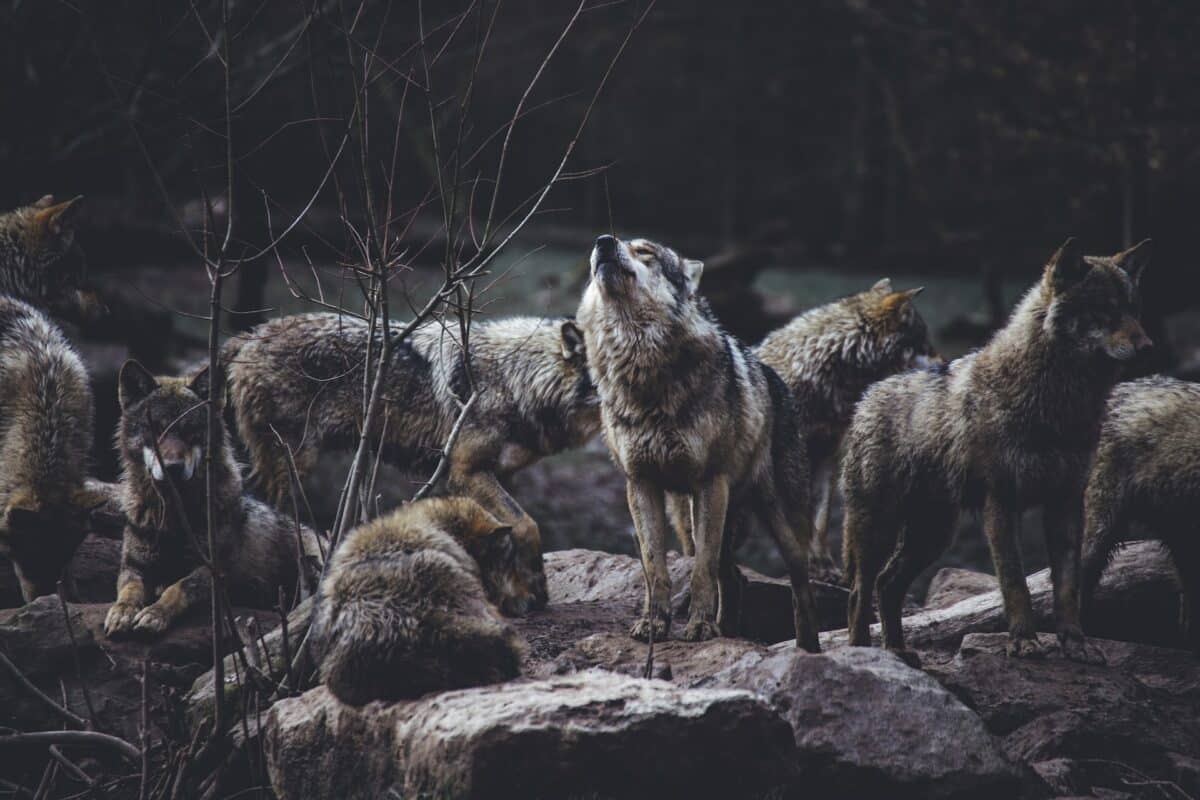
Wolf. Image via Depositphotos.
Wolves and moose have long been considered mortal enemies, with their interactions in the wild often resulting in brutal hunts that end in the death of one of the animals.
However, these two species can coexist in the same environment if the wolves understand the “rules of engagement.” It means the wolves must hunt selectively, choosing weaker or sickly moose less likely to fight instead of going after the healthy and strong ones.
Additionally, wolves must ensure they hunt only a bit in one area, which can deplete the moose population and create a lack of resources for both species. When these guidelines are followed, wolves can help control the moose population and keep the ecosystem balanced.
Check out What to Do When Encountering a Moose While Hiking.
Conservation Efforts For Both Species
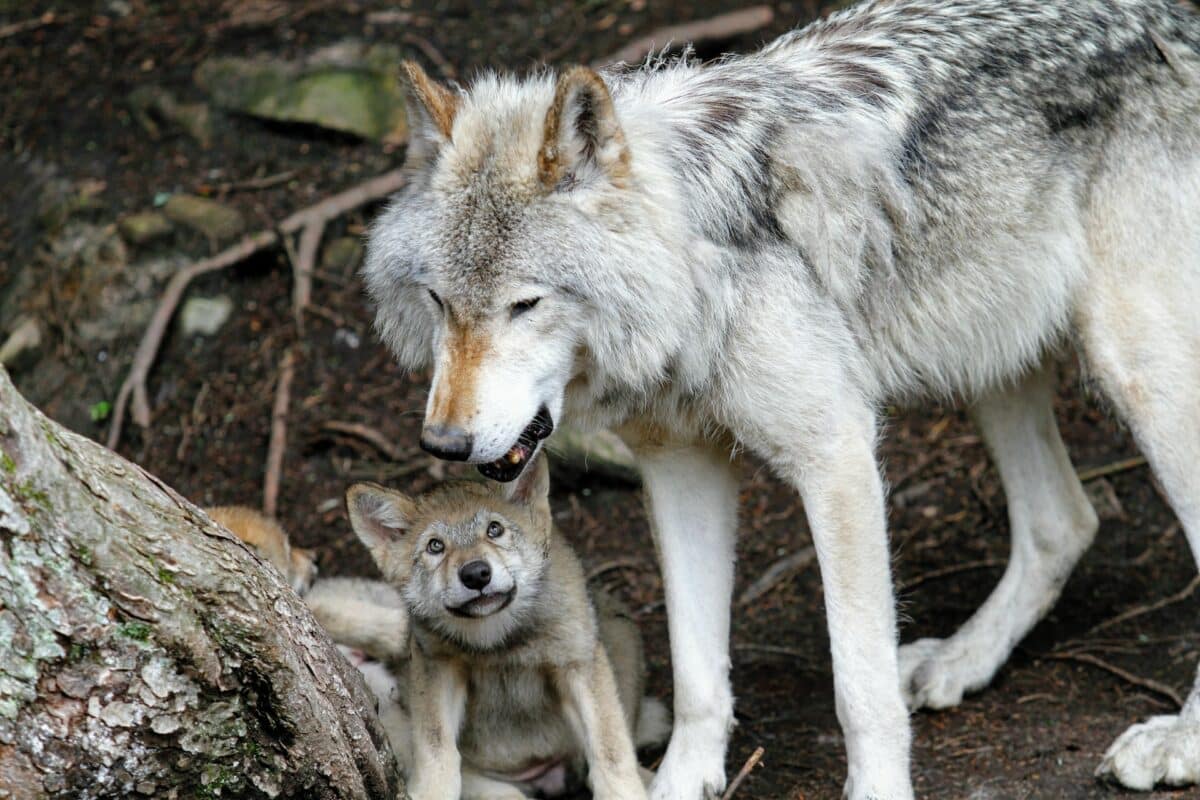
Wolf Baby. Image via Depositphotos.
Conservation efforts have been vital in ensuring the survival of both species and promoting peaceful coexistence. One of the most significant steps towards conservation has been the protection of natural habitats for both species.
Creating wildlife reserves, parks, and other protected areas has provided a safer environment for both species to thrive in.
Additionally, efforts have been made to improve public awareness and education about preserving and protecting both species. This has led to increased support for conservation efforts and a greater understanding of these animals’ threats.
Through these collective efforts, we can continue to ensure that these two magnificent species continue to thrive in the future.
Check out Wolf Ecology Basics.
Key Points
| The moose, a majestic creature of the forest, possesses distinct physical characteristics and an imposing size. Standing as tall as six feet at the shoulder and weighing up to 1,500 pounds, it commands attention. Their long and slender legs can run up to 35 miles per hour, making it difficult for predators to catch them. |
| Wolves are known for their intricate pack dynamics and hierarchical structure. Packs usually consist of an alpha pair, their offspring, and other subordinate members. These highly social animals rely on collaborative hunting strategies to secure their meals. |
| When faced with a group of wolves, a moose often displays aggressive behavior by stomping its hooves, throwing its head back and forth, and lowering its head to charge. |
| In forest environments, where visibility is limited, moose use vocalizations as their primary mode of communication. However, in more open areas, they rely more on body language and other visual cues to communicate. |
| When facing a pack of wolves, a moose’s self-defense tactics can be their lifeline. By employing bluffing and intimidation and using their antlers and hooves if necessary, moose can often defend themselves against the pack. |
The Wrap Up
YouTube
The intense battles between moose and wolf packs are a fascinating part of nature. Understanding each animal’s different roles in this scenario can help us appreciate the beauty and struggles of such wildlife interactions.
Whether it’s a longer trying fight or a shorter scuffle from one to the next, each encounter brings something new to learn about. With this guideline, we’ve worked to unravel the intricacies of “forest face-offs” by providing clues about what usually happens when a Moose meets a Pack of Wolves.
Knowing more about this helps us understand why these diverse forces often collide – quietly resolving conflicts over territorial competition within their kingdom. We hope this guide has provided information and encouraged an appreciation for such exciting encounters.
Next up: Discover a Lemming Confronting A Snowy Owl, Unveiling The Longest Snake In the World, and Discover New York’s Hidden Threat: Poisonous Spiders.
- Watch: Lizard Greets Man like a Dog! - April 25, 2024
- Mama Deer Is So Worried About Her Baby - April 25, 2024
- Watch Innocent Baby Bird Walks up to Leopard – Wild Ending! - April 25, 2024

